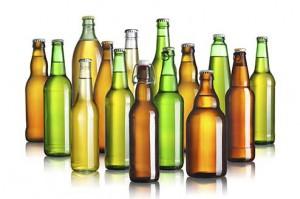Let’s investigate how different bottle materials affect beer.
Stout. Lager. Ale. No matter what style you prefer, if you’re in the business of manufacturing, wholesaling, or

As big brewers ramp up their premium offerings, distributors are scrambling to keep pace. And the challenges aren’t limited to picking orders, automating warehouse processes or transporting beverages. Packaging is a challenge too. It used to be there was one way to package alcoholic beverages: in glass bottles. Today, wine & spirits come in an array of containers: standard/mini bottles, boxes, cans and pouches. And yet, beer remains a holdout.
Beer bottles: is the future plastic or glass bottles?
Who can forget the iconic line from “The Graduate” when Mr. McGuire advises Benjamin about his future (#42 on the American Film Institute’s list of top 100 quotes):
Mr. McGuire: Benjamin, I want to say one word to you. Just one word.
Benjamin: Yes, sir.
Mr. McGuire: Are you listening?
Benjamin: Yes, I am.
Mr. McGuire: Plastics.
Benjamin: Exactly how do you mean?
Mr. McGuire: There’s a great future in plastics. Think about it. Will you think about it?
Indeed, Mr. McGuire was right. Over the last 50 years, plastics have changed virtually every aspect of life as we know it. It’s inexpensive, malleable and easily recycled. One of its variants, Polyethylene Terephthalate, better known as PET, is now the plastic of choice for water bottles and carbonated beverage containers.
Yet, when it comes to beer, cans and bottles remain the defacto container standards in the United States. In other parts of the world beer is sold in plastic bottles. And for safety reasons, it’s even mandatory at large events like the 2012 Olympics. So, why isn’t beer packaged in plastic bottles here in America? According to a recent story in Gizmodo, there are several reasons. Consider this comparison of the merits of glass vs. plastic for beer:
Glass Plastic
- Impermeable to oxygen & CO2: helps beer retain its fizz
- Taste-neutral: doesn’t interact with what’s inside it, keeping the taste pure
- Amber color of glass: protects from sun’s rays
- Heat-tolerant: can withstand heat of pasteurization process
- More porous than glass: beer goes flat sooner
- Contains chemicals: that can leach into the beverage and impact taste
- Clear: the sun’s rays can penetrate the container
- Heat-intolerant: warps from the heat of the pasteurization process
The argument for and against plastic beer bottles is interesting to ponder. But it’s bigger than pure novelty value. The glass vs. plastic bottle debate has implications for packaging processes, costs and logistics. And those implications can tax in-house resources in a big way.
As demand for packaging capacity and variety grows, packages are no longer one-size-fits-all undertakings. How you manage contract packaging and co-pack operations can have a major impact on your bottom line.
[1] Source: Supply Chain Management Review magazine.

